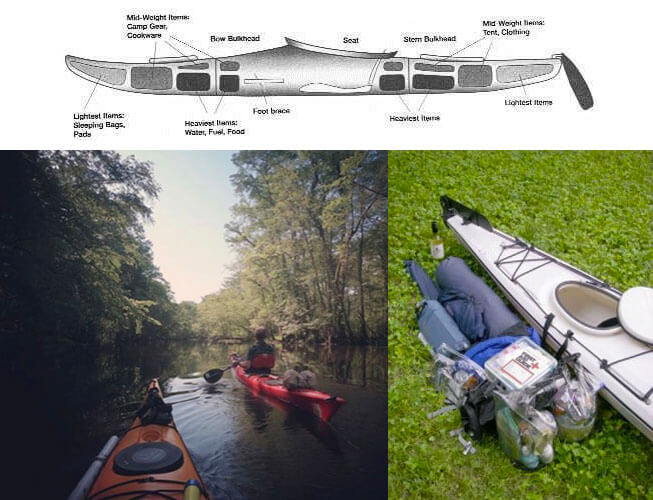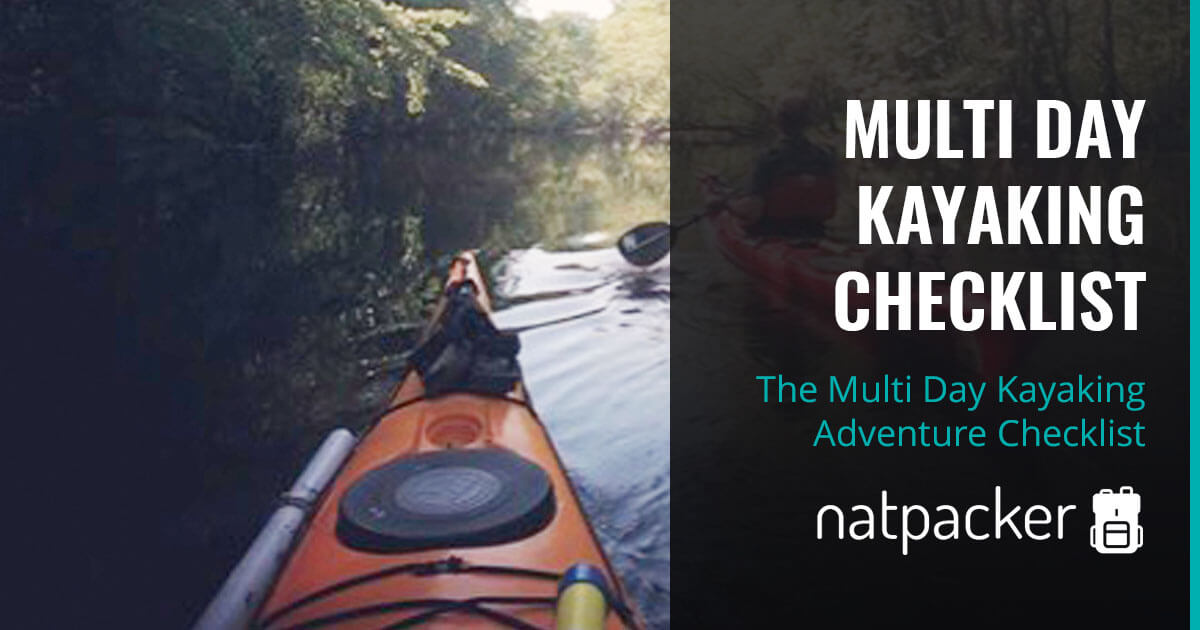Kayaking is one of my favourite activities when travelling. Whether it be on the sea, on a lake or down a river, I love it. However, I have only done half day activities, but a multi day kayak trip is definitely on my list. Here Derek from Floating Authority shares his multi day kayaking checklist.
Kayaking is such a great passion sport that often times you need more than a day to explore your surroundings. Sometimes a Day Kayaking Trip simply is not enough though! The world is rather large and to see some truly magnificent sights, sometimes you have to take a few days off and camp out.
Unfortunately first timers are often less than prepared for their first multi day kayaking excursion. This can lead to a less than ideal and potentially dangerous situation. In order to avoid this take a look at the multi day kayaking check list that I have made so that you can be confident in your excursion
Have A Plan
It is best to have a route all planned before going out and having proper navigation with you at all times. Navigation such as GPS/ Cell Phone and a compass are ideal. Not sure where exactly to start? Ask locals beforehand or join kayaking forums and ask lots of questions. This is what I do when I want to find advice on anything kayaking, someone is always more than happy to give you some advice.
For your first few multi day trips it is best to go with a friend who is experienced, so that you have someone to learn from directly when dealing with all the situations that the outdoors presents.
Be Prepared
It is always better to over pack than under pack. The further you go the more you are going to pack. Also be aware of what the weather will do in your area. If there is rain you will be packing heavier.
Where you will be paddling will also be dependent on what you will be bringing. Open Water excursions will require more navigational equipment whilst river trips will require more safety equipment such as helmets. In Multi Day Touring trips Sea/Touring Kayaks are best made for these types of excursions as they have the most room, create the least amount of drag while paddling and have comfortable seats.


The Big List
Looking at this list you may start feeling overwhelmed by how much there is! So I broke it down for you based on what to put where.
Kayak Essentials
- Kayak with all Hatches covered, rudder;
- Deck Compass;
- Paddle With Leash;
- PFD;
- Radio;
- Whistle;
- Pocket Knife;
- Compact Compass;
- Back Up Paddle;
- Maps with Case;
- Tow Belt;
- Hydration Kit;
- Spray Skirt;
- Bilge Pump;
- Duct Tape;
- Cable and shackles for rudder repair.
In The Deck Bag
- Camera with batteries and memory cards;
- Water Proof Binoculars;
- Snacks;
- Sunscreen and lip balms, advil.
In The Dayhatch
- Water Bottles;
- Food like Lunch;
- First Aid Kit;
- Flare or Emergence Strobe;
- Waterproof Headlamp;
- Small Towel;
- Toilet Paper;
- Hand Sanitiser;
- Cell phone.
Paddling Clothing
- Synthetic underwear;
- Swim trunks;
- Long sleeve shirt;
- A few t-shirts;
- Wetsuit;
- Water shoes;
- Synthetic socks;
- Gloves;
- Hat;
- Sunglasses.
Shelter
- Tent;
- Rain tarp;
- Sleeping pad and bag;
- Clothesline;
- Land clothes;
- Pj’s;
- Camp shirts;
- Long and short socks;
- Sandals;
- Knee zip pants;
- Rain jacket;
- Trash bag for wet clothing.
Camping Essentials
- Food packed in dry bags;
- Compact gas stove;
- Can opener;
- Cookware (pots pans, pails);
- Bowls and dining utensils;
- Salt and pepper;
- Kitchen knife;
- Dish towel;
- Fire starter (lighters, waterproof matches);
- Ziplock bags for trash;
- Water jugs;
- Insect Repellent;
- Many different dry bags, garbage bags ziplock bags etc;
- Book;
- Insect net;
- Ear plugs;
- Flashlight and batteries;
- Soap.
Loading your Kayak
I’m not going to lie, chances are you may not get it right the first few times. But keep trying and worst case scenario don’t bring things that you do not feel are essential to the trip.
When packing your kayak you want the heaviest items located closest to the cockpit while the lightest and smaller items located in the bow and stern. Items that you need to access regularly or for emergencies should be stored in the hatches for convenience factor.
A few things to note:
Electronics, metal equipment like cook wear and navigational equipment such as compasses should be far away from each other
- Bring Food that YOUR body is accustomed to eating
- Get a PFD with some pockets so you can store small essentials such as knives and whistles
- Big dry bags should be away from your legs at all times for safety reasons
- Throw Bag and baling equipment should be within reach at all times
- Keep the Deck free of heavy gear so that the kayak can be properly balanced
- Practice your packing skills at home before going out
While this all may sound very overwhelming at first you will, like anything, get the hang of it after doing it a few times. In the meantime get out there and explore all that you can by kayaking!


2 Comments
Thanks for sharing. I always like to read other people’s tips.
Glad you liked it 🙂